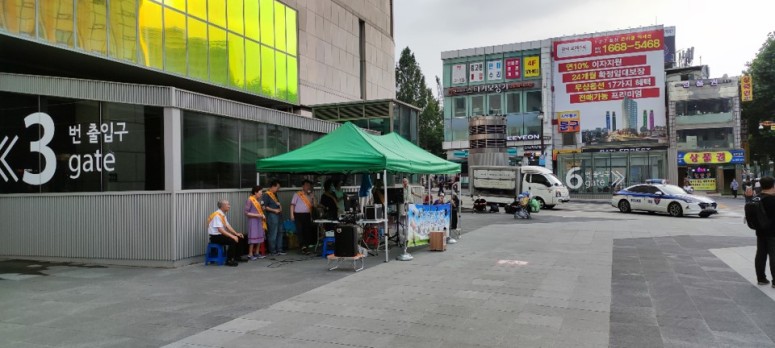“Christianity is a very loud religion in Korea,” said our guide, “you see them everywhere in Korea and definitely in Seoul, the church crosses are lit up brightly at night, there are groups with stalls beseeching you to believe in God before the rapture and hell comes.”

“There’s a lot of us here today who are Caucasian,” our host continued, a Caucasian herself, ” don’t be surprised during your trip her that English speaking Christians will reach out to evangelize to you and invite you to church.”
That was our first introduction to Christianity in South Korea. The largest formal religion in Korea with almost 30% of the nation adherent to it – a mixture of protestants and Catholics.

Christianity is clearly not an indigenous religion to Korea, especially as it is a new entrant compared to Buddhism and Confucianism that have been deeply entrenched in society. And yet it is very active among global Christianity – it has the second largest number of missionaries around the world second only to the United States (despite a population of just above 50 million), it has the largest megachurch in the world (Yoido Full Gospel Church with 480,000 congregants), it’s Catholic clergy are at the top of ecclesiastical hierarchy (cardinals and prefects of dicastaries) and it counts more than a 100 matyrs and saints.
Unlike many countries where Christianity was introduced by missionaries, the religion was introduced to Korea organically – it was brought to Korea in the 17th century by Confucian scholars who had encountered the religion in China. These scholars brought theological texts written by the Jesuit Matteo Ricci and studied them. It was in the mid 18th century (1758) that the Joseon King Yeongjo outlawed the religion as an evil practice. It was reintroduced 30 years later but worse was to come.
Joseon ruler’s saw the new religion as subversive of Confucianism and repressed it, culminating in the five waves of persecution from 1791-1866 with some 8-10,000 Korean Christians killed.
The repression eased as Joseon opened up and did more trade with western countries.

Protestantism was introduced to Korea in the 1880s. It grew rapidly during the Korean War when Christian churches were the best places to give safety and succour (because they were defended by Western powers) and became linked with a South Korean national identity.
Roles have since reversed severely in Korea. Rather than being persecuted by the government, Christians and Catholics have come to form the majority of a few governments. Out of Korea’s nine democratic presidents, 7 have been Christian (including the current president Yoon who is Roman Catholic).
The most notable was under the Lee Myung-bak administration where Lee was an elder in the Presbyterian church and whose adminstration resulted in protests by Buddhist on discrimination.
Many of the most influential celebrities in Korea are also Christian. When Pope Francis visited in 2014, a song with a whose who of Korea catholic celebrities was released, the sheer number of celebrities prompted surprise among observers.
This rapid growth has come with challenges too, South Korea is home to some massive cults such as the JMS church.
Some cults have been alleged to conduct even more atrocious acts.
Of course, anyone who knows a bit more about christianity will tell you that there is a difference between the orthodox/proper denominations and their cultish pretenders. And they would be right, I’ll let people who are more educated on christianity in Korea have the last word.
Surprising huh 😉
